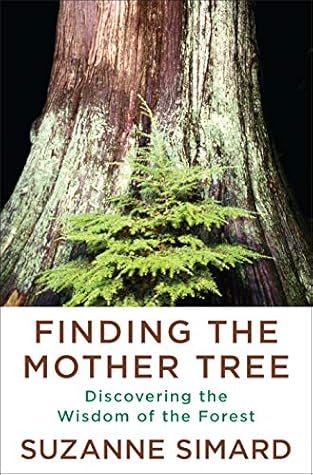More on this book
Community
Kindle Notes & Highlights
Read between
June 16 - December 2, 2021
Mowing down the forests and harvesting the waters to fulfill our wildest dreams of material wealth just because we can has caught up to us.
Castlegar,
Mary
The hemlocks seeded in from surrounding Mother Trees were increasingly robust as we approached the timberline.
Bit by bit, with the help of the Mother Trees, the creatures—fungi and bacteria, plants and centipedes—were working together to heal the wounds of this exploited, majestic place.
Grannie Winnie
Scientists now are more willing to say that forests are complex adaptive systems,
The properties of an ecosystem breathe with health, productivity, beauty, spirit. Clean air, clean water, fertile soil. The forest is wired for healing in this way, and we can help if we follow her lead.
The land wanted to heal itself. Just as my body did,
Nothing should be lost. Everything has a purpose, and everything is in need of care. This is my creed.
Our goal is to further develop an emergent philosophy: complexity science.
red cedar Mother Trees
Western red cedar is known as the tree of life to the Aboriginal people of the West Coast of North America,
Douglas-fir Mother Tree,
The Aboriginal people use the wood
Western red cedar Grandmother Tree,
Sitka spruce Mother Tree
Haida Gwaii.
Western red cedar
the cornerstone of Aboriginal culture on the West Coast of North America.
Western red cedar Mother Tree
an arbuscular mycorrhizal network.
Douglas-fir Mother Tree,
used by the Aboriginal people of the Pacific Northwest
Sitka spruce Mother Tree among western hemlock and spruce saplings
Yakoun River on Haida Gwaii.
The trees provide the fungus with sugars from photosynthesis in return for nutrients the fungus collects from the soil.
CRITICAL SOURCES
Simard, Isobel.
British Columbia Ministry of Forests.
British Columbia Ministry of Forests.
Heineman, J. L., Sachs, D. L., Simard, S. W., and Mather, W. J. 2010.
Heineman, J. L., Simard, S. W., Sachs, D. L., and Mather, W. J. 2005.
2007.
2009.
Simard, S. W. 1993.
1995.
Simard, S. W., Heineman, J. L., Hagerman, S. M., et al. 2004.
Simard, S. W., Heineman, J. L., Mather, W. J., et al. 2001.
Read, D. J. 1983.
Read, D. J.,
1985.
Simard, S. W. 1990. A retrospective study of competition between paper birch and planted Douglas-fir.
Simard, S. W., Molina, R., Smith, J. E., et al. 1997. Shared compatibility of ectomycorrhizae on Pseudotsuga menziesii and
Betula papyrifera seedlings grown in mixture in soils from southern British Columbia.
Simard, S. W., and Vyse, A. 1992.
Durall, D. M., Gamiet, S., Simard, S. W., et al. 2006. Effects of clearcut logging and tree species composition on the diversity and community composition of epigeous fruit bodies formed by ectomycorrhizal fungi. Canadian Journal of Botany 84:
Simard, S. W., and Durall, D. M. 2004. Mycorrhizal networks: A review of their extent, function and importance. Canadian Journal of Botany 82:
Simard, S. W., Durall, D. M., and Jones, M. D. 1997. Carbon allocation and carbon transfer between Betula papyrifera and Pseudotsuga menziesii seedlings using a 13C pulse-labeling method. Plant and Soil 191:


